History GK Compilation from JKPSC Exam 2010:
1. Where has the ‘Great Bath’ structure been found in the Harappan sites?
(A) Mohanjodaro
(B) Harappa
(C) Lothal
(D) Kalibangan
Ans: Mohanjodaro (A)
2. What was the shape of standard Harappan seals?
(A) Round
(B) Rectangular
(C) Square
(D) Conical
Ans: Square (C)
3. Where is the famous Harrapan site of Kalibangan located?
(A) Punjab
(B) Rajasthan
(C) Sindh
(D) Gujarat
Ans: Rajasthan (B)
4. The horned deity is the peculiar feature of
(A) The Vedic culture
(B) The Sangam culture
(C) The Pre-Harappan culture
(D) The Harappan culture
Ans: The Harappan culture (D)
5. Where is the ‘Battle of Ten Kings’ mentioned in ancient texts?
(A) Rig Veda
(B) Yajur Veda
(C) Brahamanas
(D) Sam Veda
Ans: Rig Veda (A)
6. Sabha in Vedic times referred to
(A) A general assembly of the entire tribe
(B) A Council of tribal elders
(C) Advisors of the King
(D) A group of influential kulapas
Ans: A Council of tribal elders (B)
7. Where King Ajatshatru ruled in the Pre-Mauryan period?
(A) Vaishali
(B) Kaushambi
(C) Magadha
(D) Ayodhya
Ans: Magadha (C)
8. Gautam Buddha delivered his sermons in
(A) Sanskrit
(B) Prakrit
(C) Pali
(D) Tamil
Ans: Pali (C)
9. What was the basic characteristic of the Ajivika sect?
(A) Religious freedom
(B) Materialism
(C) Vedic rituals
(D) Belief in pre-determinism
Ans: Belief in pre-determinism (D)
10. Which of the following match is the correct one?
(A) Buddhism: The Turning of the Wheel of law
(B) Jainism: Belief in rituals and God
(C) Ajivikas: Materialism
(D) Charvaks: Pre-determinism
Ans: Buddhism: The Turning of the Wheel of law (A)
11. The Mauryan dynasty succeeded which of the following dynasty?
(A) The Shishunaga
(B) The Nandas
(C) The Pallavas
(D) The Kushanas
Ans: The Nandas (B)
12. The inscriptions of King Asoka are mostly in
(A) Kharosthi script
(B) Devanagari script
(C) Aramaic script
(D) Brahmi script
Ans: Brahmi script (D)
13. What was described in Asoka’s principles of Dhamma?
(A) Principles of Buddhism
(B) A set of Rules and Regulations framed by the State
(C) General guidelines for good social conduct
(D) Religious duties of a man
Ans: General guidelines for good social conduct (C)
14. Who were the immediate successors of the Mauryas?
(A) The Shishunagas
(B) The Shungas
(C) The Kushanas
(D) The Guptas
Ans: The Shungas (B)
15. Milinda-Panho (The Questions of King Milinda) is a
(A) Buddhist text
(B) Jain text
(C) Greek text
(D) A text of Ajivikas
Ans: Buddhist text (A)
16. What is Tolkappiyam?
(A) A Jain text
(B) The earliest Tamil grammar
(C) A temple built by the Chola King Karikala
(D) An Epic in Tamil
Ans: The earliest Tamil grammar (B)
17. Whom the famous Allahabad inscription refers to?
(A) Bindusara
(B) Chandragupta–I
(C) Chandragupta–II
(D) Samudragupta
Ans: Samudragupta (D)
18. Which of the following rulers patronized the poet Banabhat?
(A) Chandragupta–II
(B) Harsavardhana
(C) Samudragupta
(D) Chandragupta–I
Ans: Harsavardhana (B)
19. How many castes India had according to the Indika of Megasthenes?
(A) 4
(B) 5
(C) 6
(D) 7
Ans: 7 (D)
20. What was the basic feature of Maurya rule?
(A) A centralized bureaucracy
(B) De-centralization
(C) Governance by feudatories
(D) Domination of Kings’ relative
Ans: A centralized bureaucracy (A)
21. Who were the rajukas?
(A) Governors of King Harsavardhana
(B) Feudatories of The Guptas
(C) Judicial officers in rural areas of the Mauryas
(D) Members of the Royal family
Ans: Judicial officers in rural areas of the Mauryas (C)
22. Which part of India was ruled over by the Satavahanas?
(A) Eastern
(B) Northern-Deccan
(C) Gandhara
(D) Southern
Ans: Northern-Deccan (B)
23. Why was the place Arikamedu famous during Chola’s rule?
(A) It was the capital of early Chola Kings
(B) It was the birth place of a Chola King
(C) It was the place where the Chola mint existed
(D) It was a famous trading port on Tamil coast
Ans: It was a famous trading port on Tamil coast (D)
24. Which type of stone was used by the sculptors of the Mathura School of Art?
(A) White marble
(B) Red sandstone
(C) Granite
(D) None of the above
Ans: Red sandstone (B)
25. Which one of the following match is correct?
(A) Nagarjuna: Sunyavad or the Doctrine of Void
(B) Hinayana: The Concept of Boddhisatva or the Suffering saviour
(C) Jainism: Concept of Bhakti or devotion
(D) Vaishnavism: Worship of Lingam or the phallic symbol
Ans: Nagarjuna: Sunyavad or the Doctrine of Void (A)
26. What were the ‘agrahara’ land grants ?
(A) Land grants given to administrative servants
(B) Tax-free land grants given to the Brahmans
(C) Grants to soldiers
(D) Land grants given in lieu of cash salary
Ans: Tax-free land grants given to the Brahmans (B)
27. Who wrote Pancha-siddantika (Five School of Astronomy), a famous work in ancient India?
(A) Aryabhatta
(B) Varahmihira
(C) Shudraka
(D) Brhamgupta
Ans: Varahmihira (B)
28. Which sect was the famous Vikramshila monastery associated with?
(A) Mahayana
(B) Hinayana
(C) Sarvastivadin
(D) Vajrayana
Ans: Vajrayana (D)
29. Which one of the following match is correct?
(A) Gosala Maskuriputra: Ajivikas
(B) Kumarapala: Buddhism
(C) Ajita Kesakambalin: Jainism
(D) Shankara: Dualistic Vedanta
Ans: Gosala Maskuriputra: Ajivikas (A)
30. Which one of the following match is correct?
(A) Sankhya: Spiritual salvation
(B) Vedanta: Yoga Sutra
(C) Nyaya School: Logic and Epistemology
(D) Mimamsa: Atheism
Ans: Nyaya School: Logic and Epistemology (C)
31. Painted Gray Ware or PGW is associated with
(A) The Early Vedic Culture
(B) The Harappan Culture
(C) The Maurayan Empire
(D) The Gupta Empire
Ans: The Early Vedic Culture (A)
32. The ‘Alavars’ were Bhakti saints of
(A) Shaivites
(B) Vaishnavaites
(C) Lingayata
(D) Saktas
Ans: Vaishnavaites (B)
33. Which one of the following was the holder of the designation ‘Muqti’ under Sultans?
(A) A judicial officer
(B) The Governor of a province
(C) A village headman
(D) The holder of an Iqta
Ans: The holder of an Iqta (D)
34. Who were the banjaras during the medieval times?
(A) The courtiers of kings
(B) A community of folk entertainers
(C) Iterant traders
(D) Agriculturists
Ans: Iterant traders (C)
35. Who acted as the village level accountants in the rural society of Deccan?
(A) Deshmukh’s
(B) Patils
(C) Mirasars
(D) Kulkarni’s
Ans: Kulkarni’s (D)
36. Which one of the following matches is correct?
(A) Mirasi tenure: Hereditary proprietary rights in land
(B) Upari Tenure: Resident of a village having cultivating rights in lands
(C) Sarkharchi Sheri: Rewards for services rendered to the village
(D) Watan tenure: Given to soldiers
Ans: Mirasi tenure: Hereditary proprietary rights in land (A)
37. Which one of the following kingdoms developed the ‘Ayagar’ system to administer rural areas?
(A) The Cholas
(B) Vijayanagara Empire
(C) The Bahmanis
(D) The Satvahanas
Ans: Vijayanagara Empire (B)
38. Who introduced the ‘du-aspa sih aspa’ system for determining the obligations of the mansabdari?
(A) Akbar
(B) Shahjahan
(C) Jahangir
(D) Aurangzeb
Ans: Jahangir (C)
39. What do you mean by ‘Ur’ in Chola administration ?
(A) An assembly of the Brahmans of a village
(B) The general assembly of all adult members of a village
(C) The administrative unit of a district
(D) An assembly of members of a guild
Ans: The general assembly of all adult members of a village (B)
40. ‘Manigramam’ during the Chola period was
(A) Association formed by traders to safeguard their trade
(B) An association of the craftsmen
(C) An association to look after the temple affairs
(D) An assembly of monks
Ans: Association formed by traders to safeguard their trade (A)
41. Which one of the following matches is correct?
(A) Hemachandra: Rajtarangini
(B) Bilhana: Gaudavadaha
(C) Vakpati: Vikramaditya Charita
(D) Vishakhadatta: Mudrarakshasa
Ans: Vishakhadatta: Mudrarakshasa (D)
42. Which Chola king took the title of ‘Gangai Kondai’?
(A) Vijaylaya
(B) Rajendra Chola
(C) Prantaka–I
(D) Rajaraja–I
Ans: Rajendra Chola (B)
43. What was the amount of land revenue charged by the Chola Kings?
(A) 1/6 of the produce
(B) 1/5 of the produce
(C) 1/4 of the produce
(D) 1/3 of the produce
Ans: 1/3 of the produce (D)
44. Silappadikaram and Manimekhlai were written during the rule of
(A) The Cholas
(B) The Satvahanas
(C) Vijyanagara Empire
(D) The Pandyas
Ans: The Pandyas (D)
45. Which one of the following matches is correct?
(A) Prantaka-I: Pandya
(B) Kanddungori: Chola
(C) Maruvarman Avani Sulamani: Vijyanagara
(D) Rajaraja-I: Chola
Ans: Rajaraja-I: Chola (D)
46. Who wrote Shahnama during the rule of Mahmud Ghazni?
(A) Firdaus
(B) Al-beruni
(C) Abul Fazl
(D) Ibn Batuta
Ans: Firdaus (A)
47. Which Turkish ruler built the Quwaat-ul-Islam mosque near Qutub Minar?
(A) Illtutmish
(B) Balban
(C) Qutubuddin Aibek
(D) Razia Sultan
Ans: Qutubuddin Aibek (A)
48. Which ruler of the slave dynasty organized a group of forty nobles known as ‘Chalihani’?
(A) Balban
(B) Qutubuddin Aibek
(C) Razia Sultan
(D) Illtutmish
Ans: Illtutmish (D)
49. Which one of the following matches is correct?
(A) Diwan-i-Wazarat: Military administration
(B) Diwan-i-Insha: In charge of the correspondence of the State
(C) Diwan-i-Arz: Personal services of the Sultan
(D) Chief Barid: A Judiciary Functionary of the State
Ans: Diwan-i-Insha: In charge of the correspondence of the State (A)
50. Which Tughlaq ruler built the famous Western Yamuna Canal?
(A) Ghiyasuddin Tughlaq
(B) Muhammad-bin-Tughlaq
(C) Feroz Tughlaq
(D) Nasiruddin Tughlaq
Ans: Feroz Tughlaq (C)
51. Who wrote Tarikh-i-Ferozshahi?
(A) Al-beruni
(B) Amir Khusro
(C) Hasan Azmi
(D) Ziauddin Barani
Ans: Ziauddin Barani (D)
52. Which Turkish ruler introduced the famous market reforms?
(A) Ala-ud-din-Khalji
(B) Jala-ud-din Khalji
(C) Muhammad-bin-Tughlaq
(D) Balban
Ans: Ala-ud-din-Khalji (A)
53. Who was the Chief Minister of Krishna devaraya of Vijyanagara?
(A) Harihar
(B) Tenali Ram
(C) Hasan Gangu
(D) Mahmud Gawan
Ans: Tenali Ram (B)
54. Zianul Abidin, the famous ruler of Kashmir in the fifteenth century, is remembered for
(A) His religious fanaticism
(B) His antagonism with the Mughals
(C) His alliance with the Sikhs
(D) His policy of religious tolerance
Ans: His policy of religious tolerance (D)
55. Which one of the following matches is correct?
(A) Vijyanagara Empire: Ashta Diggaj
(B) Mewar: Raja Jai Singh
(C) Zaina Lanka: Akbar
(D) Battle of Khanua: Maharana Pratap
Ans: Vijyanagara Empire: Ashta Diggaj (A)
56. When did Akbar rename Sikri as Fatehpur Sikri?
(A) After the Conquest of Bengal
(B) After the Conquest of Mewar
(C) After the Conquest of Gujarat
(D) After the Conquest of Kashmir
Ans: After the Conquest of Gujarat (C)
57. In which famous battle Sher Shah Suri defeated Humanyun?
(A) Battle of Chausa
(B) Battle of Khanua
(C) Battle of Agra
(D) Battle of Panipat
Ans: Battle of Chausa (A)
58. Which Mughal Emperor assumed the title of Alamgir?
(A) Jahangir
(B) Shahjahan
(C) Bahadur Shah
(D) Aurengzeb
Ans: Aurengzeb (D)
59. Which Mughal ruler abolished ‘rahdari’ (inland duty) and ‘pandari’ (octroi)?
(A) Aurengzeb
(B) Jahangir
(C) Akbar
(D) Shahjahan
Ans: Aurengzeb (A)
60. Who wrote Tuzuk-i-Jahangiri ?
(A) Abul Fazl
(B) Amir Khusro
(C) Jahangir
(D) Gul-badan-Begum
Ans: Jahangir (C)
61. Who laid the foundation of the kingdom of Awadh?
(A) Saadat Khan
(B) Asaf Jah
(C) Alivardi Khan
(D) Safdarjung
Ans: Saadat Khan (A)
62. When did the Marathas capture Delhi?
(A) 1738
(B) 1760
(C) 1742
(D) 1758
Ans: 1760 (B)
63. Shivaji’s ‘mulk-i-quadim’ territory meant
(A) His own Kingdom
(B) The Old Territory
(C) Territories that were still part of the Mughal Empire
(D) Territories given to his Sardars for their services
Ans: The Old Territory (B)
64. Balaji Vishwanath, under whom the domination of Peshwa began, was the Peshwa of
(A) Shambhaji
(B) Tara bai
(C) Shivaji–II
(D) Shahu
Ans: Shahu (D)
65. What was the meaning of the Sufi Concept of ‘Riza’?
(A) Piety
(B) Gratitude
(C) Patience
(D) Submission to God
Ans: Submission to God (D)
66. Which Sikh Guru built the famous Harmander Sahib Gurudwara?
(A) Guru Angad
(B) Guru Arjan Dev
(C) Guru Ramdas
(D) Guru Har Govind
Ans: Guru Arjan Dev (B)
67. Which Sikh holy place is also known as Takht Sri Keshgarh Sahib?
(A) Amritsar
(B) Anandpur
(C) Gurudwara Shisganj
(D) Patna Sahib
Ans: Anandpur (B)
68. Which Sufi order (silshila) was the most visible in India?
(A) Chisti
(B) Naqshbandi
(C) Suhraward
(D) Qaddiri
Ans: Chisti (A)
69. What was the Sardeshmukhi?
(A) Land revenue in Maratha territories
(B) A sort of zamindari claim to about 1/10 of the assessed revenue
(C) A claim to about 1/4 of the revenue
(D) ‘Rahdari’ or inland duty in the Maratha territories
Ans: A sort of zamindari claim to about 1/10 of the assessed revenue (B)
70. Which one of the following matches is correct?
(A) Kamvishdar: An Officer in Maratha district-level administration
(B) Muqti: Local official in the Sultanate Period
(C) Mustajirs: Governors of Provinces under Mughals
(D) Tarfdars: Sardars of Chola Kings.
Ans: Kamvishdar: An Officer in Maratha district-level administration (A)
71. What was ‘Rakhi’ under the Sikh rule?
(A) Protection of women
(B) Protection of cultivators against outsiders after levying 1/5 of produce
(C) A symbol of the brotherhood of different religious communities
(D) Initiation ceremony for the Sikhs
Ans: Protection of cultivators against outsiders after levying 1/5 of produce (B)
72. To which nationality the chief organizers of Ranjit Singh Fauz-i Khas, Allard and Ventura belonged?
(A) French
(B) Dutch
(C) Portuguese
(D) English
Ans: French (A)
73. Who led the Santhal School or uprising of 1855-56?
(A) The Dikus
(B) Kunwar Singh
(C) Balwant Phadke
(D) Sido nad Kanhu
Ans: Sido nad Kanhu (D)
74. Which of the following match is correct?
(A) Rampa Revolt: 1875
(B) Munda Ulgulan: 1899-1900
(C) Bhil Uprising: 1880
(D) The Deccan Peasant Uprising: 1890
Ans: Munda Ulgulan: 1899-1900 (B)
75. Where did the Indigo revolt of 1859-60 take place?
(A) Champaran in Bihar
(B) North-Deccan
(C) Bengal
(D) Malabar
Ans: Bengal (C)
76. Where did the Indigo revolt of 1859-60 take place?
(A) Champaran in Bihar
(B) North-Deccan
(C) Bengal
(D) Malabar
Ans: Bengal (C)
77. The Deccan Peasant Revolt (1875) was a revolt against:
(A) Moneylenders
(B) Landlords
(C) Dikus
(D) British planters
Ans: Moneylenders (A)
78. Who was the first president of the Indian National Congress?
(A) A.O. Hume
(B) Womesh Chandra Bonnerjee
(C) William Wederburn
(D) Dada Bhai Nauroji
Ans: Womesh Chandra Bonnerjee (B)
79. Who was the first foreign-born president of the Indian National Congress?
(A) A.O. Hume
(B) William Wederburn
(C) Annie Besant
(D) George Yule
Ans: George Yule (D)
80. Which one of the following is the correct match?
(A) R.C. Dutt: The Economic History of India
(B) Dadabhai Nauroji: Prosperous British India
(C) Gopal Krishna Gokhale: Hind Swaraj
(D) M.G. Ranade: The Poverty and Un-British Rule in India
Ans: R.C. Dutt: The Economic History of India (A)
81. When was the Brahmo Samaj formed?
(A) 1845
(B) 1835
(C) 1838
(D) 1828
Ans: 1828 (D)
82. Which one of the following matches is correct?
(A) Virasilingam: Rajamundri Social Reform Association
(B) Sri Narayana Guru: Ghulam Giri
(C) Dayananda Saraswati: Prarthana Samaj
(D) B.R. Ambedkar: Satya Shodhak Samaj
Ans: Virasilingam: Rajamundri Social Reform Association (D)
83. Who was the main campaigner for the Age of Consent Act of 1891?
(A) Bal Gangadhar Tilak
(B) Vishnu Krishna Chiplunkar
(C) Mahatama Jyotiba Phule
(D) Behramji Malabari
Ans: Behramji Malabari (D)
84. Which Subedar attained autonomy for the Bengal Suba?
(A) Murshid Kuli Khan
(B) Saddat Khan
(C) Asaf Zah
(D) Mir Qasim
Ans: Murshid Kuli Khan (A)
85. Who established Tattava Bodhini Sabha?
(A) Swami Vivekanand
(B) Keshub Chandra Sen
(C) Debendra Nath Tagore
(D) Raja Ram Mohan Roy
Ans: Debendra Nath Tagore (C)
86. Which of the following reformer was also popularly known as Lokhitwadi?
(A) Mahatma Jyotiba Phule
(B) Gopal Hari Deshmukh
(C) Vishnu Shastri Chiplunkar
(D) Ram Krishna Gopal Bhandarkar
Ans: Gopal Hari Deshmukh (C)
87. Who established Abhinav Bharat?
(A) Bipin Chandra Pal
(B) Aurobindo Ghosh
(C) Ras Bihari Bose
(D) V.D. Savarkar
Ans: V.D. Savarkar (D)
88. Which one of the following matches is correct?
(A) Tarak Nath Das: Free Hindustan
(B) Shyamji Krishna Verma: Swadesh Sevak
(C) V.D. Savarkar: The Ghadar
(D) Lala Lajpat Rai: New India
Ans: Tarak Nath Das: Free Hindustan (A)
89. Which one of the following leaders wrote the Indian war of Independence?
(A) Madame Cama
(B) Lala Har Dayal
(C) V.D. Savarkar
(D) Tarak Nath Das
Ans: V.D. Savarkar (C)
90. Apart from the famous Congress-League Pact, why was the Lucknow session of the Congress important?
(A) A proposal was accepted to form a small Working Committee
(B) It endorsed to start an All India Movement
(C) Re-entry of the ‘Extremists’ in the Congress
(D) For the formation of All India Trade Union Congress
Ans: Re-entry of the ‘Extremists’ in the Congress (C)
91. Who was the author of “Indian Unrest”?
(A) Annie Besant
(B) Valentine Chirol
(C) Bal Gangadhar Tilak
(D) Mohandas Karamchand Gandhi
Ans: Valentine Chirol (B)
92. Which of the following organizations led the famous Kheda Satyagraha?
(A) The Gujarat Sabha
(B) Servants of India Society
(C) Indian National Congress
(D) Home Rule League
Ans: The Gujarat Sabha (A)
93. What was the Tinkathia system in Champaran Indigo growing areas that Gandhi wanted to abolish?
(A) A system of vethi (forced labour)
(B) A system of rent levied on the cultivators by the planters
(C) A system of rent levied on the cultivators by the planters
(D) An agreement imposed on the cultivators to grow indigo on 3/20 of their holdings
Ans: An agreement imposed on the cultivators to grow indigo on 3/20 of their holdings (D)
94. Which was the Sikh Misl of Maharaja Ranjit Singh?
(A) Sukarchakia
(B) Bhangi
(C) Nakai
(D) Phulkian
Ans: Sukarchakia (A)
95. When did Nair Shah invade India?
(A) During the reign of Furukshiyar
(B) During the reign of Muhammad Shah
(C) During the reign of Jahandar Shah
(D) During the reign of Shah Alam-II
Ans: During the reign of Muhammad Shah (B)
96. Who moved the main resolution on Non-cooperation in the Nagpur Session of the Congress?
(A) Mahatama Gandhi
(B) Motilal Nehru
(C) Vallabhbhai Patel
(D) C.R. Das
Ans: C.R. Das (D)
97. Which one of the following matches is correct?
(A) Sahajanand Saraswati: Awadh Peasant Movement
(B) Baba Ram Chandra: Bardoli Satyagraha
(C) Gauri Shankar Mishra: UP Kisan Sabha
(D) Indulal Yagnik: Servants of India Society
Ans: Gauri Shankar Mishra: UP Kisan Sabha (C)
98. When was the All-India Trade Union Congress formed?
(A) 1920
(B) 1921
(C) 1922
(D) 1923
Ans: 1920 (A)
99. Who was the president of the First All-India Trade Union Congress?
(A) B.P. Wadia
(B) Dewan Chaman Lal
(C) Jawaharlal Nehru
(D) Lala Lajpat Rai
Ans: Lala Lajpat Rai (D)
100. What was the main reason for the emergence of the Akali Movement in Punjab?
(A) Atrocities of Jalianwala Bagh
(B) Corruption of Mahants in Gurudwaras
(C) Heavy land revenue burden on the Sikh peasantry
(D) Government’s attempt to control Gurudwaras
Ans: Corruption of Mahants in Gurudwaras (B)
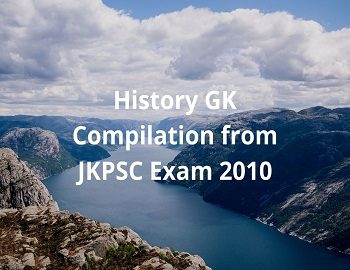
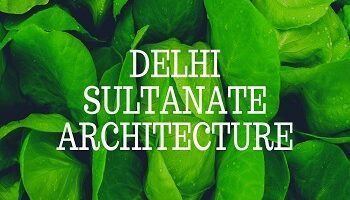
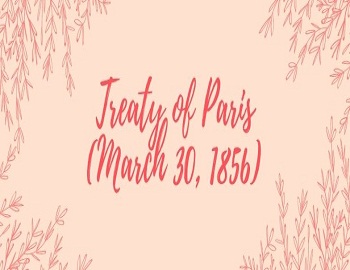
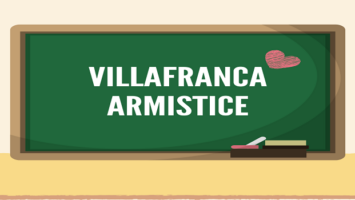
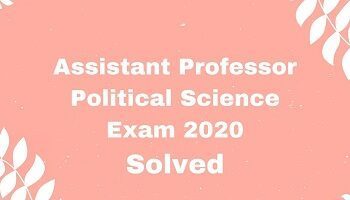
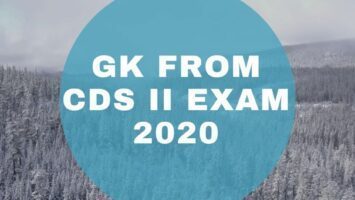
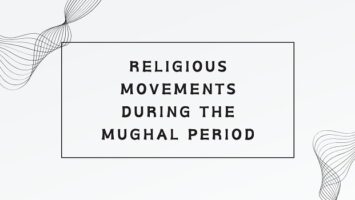
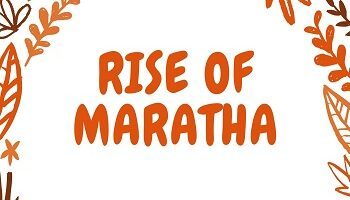

Comments (No)